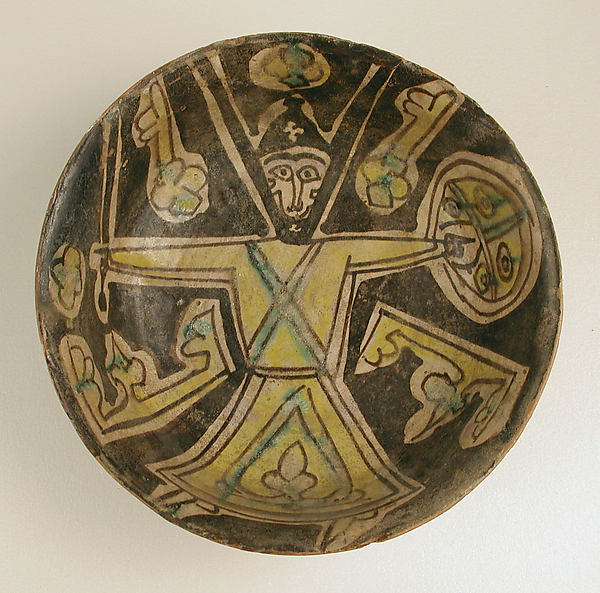Bowl with a Man Holding a Sword and Shield, 10th Century, Nishapur, Iran or Samarqand, Uzbekistan
Metropolitan Museum of Art, New York
 A larger image of a bowl with a Man Holding a Sword and Shield, 10th Century, Nishapur, Iran or Samarqand, Uzbekistan. Metropolitan Museum of Art, New York. |